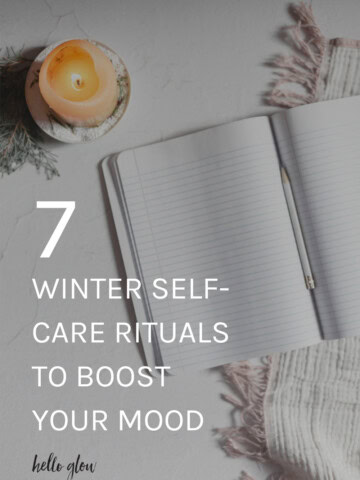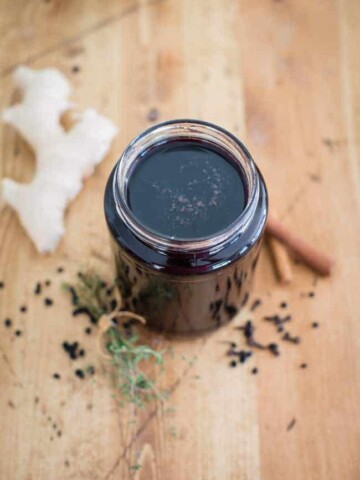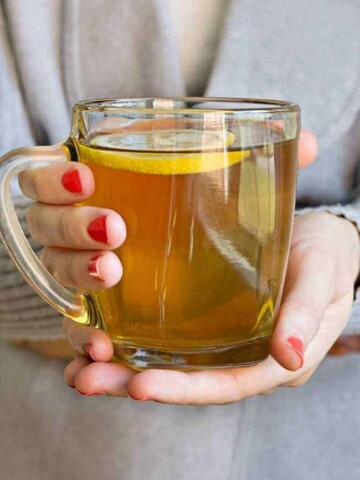Even as I detox more and more items in my house—including my cleaning products and the contents of my kitchen cupboards—it's still been really hard to make peace with changing how I deal with my period. It seems like there have always been just two options when that time of the month arrives: pads or tampons.
The more I read about how synthetic fibers, non-organic cotton, plastics, and chemical reproductive/endocrine disruptors affect our bodies [source], I'm realizing that I should probably switch over to more natural products at least some of the time. There's also the environmental impact of using disposable products [source], which honestly makes me feel incredibly guilty every time I put a box of tampons in my cart at the drugstore.
Why Natural Period Products?
New products have arrived in the past few years, many based on how women dealt with their periods in the old days (after all, tampons haven't been around forever!). Overall, they're cheaper over the long term, better for the environment, and safer.
Anecdotally, some women say their periods have become more regular or that their symptoms lessened once they switched to more natural feminine hygiene products—which is enough to convince me to at least try one of these.
There's also something to be said for, well, getting in touch with your body's natural functions. Products like the ones below are revolutionary—for the environment, for our bodies, and for the cultural stigma about menstruation. You are a woman! You menstruate! It's not something to be embarrassed about.
Here's what to expect from each product, along with some pros and cons.
1. Reusable Pads
Disposable pads are actually a pretty new invention in the grand scheme of things. While there's no risk of toxic shock syndrome like with tampons (because the pad sits outside your body) and less risk for operator error resulting in leaks, many pads do contain perfumes or other chemicals that can alter your body’s delicate pH balance.
Plus, they can just be a pain to deal with, and it seems so wasteful (and expensive!) to use them all the time. But if you're a regular pad user, reusable cloth pads might be the way to go—simply stock up on a few, and wash them as you use them, rotating through your stash during your cycle.
I've heard women who use reusable pads say that they're more comfortable (you won't feel like you're wearing a diaper, promise) and more breathable. Many brands have material sewn in to combat leaks and/or snaps to keep the pad fastened correctly—none of those annoying adhesive strips that never really work anyway.
But wearing them does take some planning. It's not like you're going to carry around a used pad home with you if you need to change it when you're out and about! So it may be best to use them in tandem with another option, like using disposables when you're out.
2. Menstrual Cups
Menstrual cups are available in reusable and disposable versions, and some of the reusable ones can be used for years. Menstrual cups are made from medical-grade rubber silicone and are folded and then inserted inside you, where they collect the blood. They come in different sizes, usually one for light flow and one for heavy, and a variety of colors.
You can leave menstrual cups in for about 12 hours (versus 4 to 8 for a tampon) and swim, run, or do other activities you'd do with a tampon in. Since they're simply collecting the blood, cups won't change your vaginal pH or affect beneficial bacteria like a tampon can (which can cause dryness and itchiness). Because of this, you can wear them before your period even starts, so you're ready.
When you remove the cup, you pour the blood out, wash, and rinse it before re-inserting. Between cycles, it's important to sanitize the cup. Use a liquid cleanser and on-the-go wipes.
While there’s a bit of a learning curve involved, especially for younger women, it’s no big deal once you get the hang of it. And switching is worth it when you consider how much money you’ll save. A menstrual cup will last years. Compare that to the hundreds of dollars you probably spend on tampons and pads each year!
3. Natural Disposable Pads + Tampons
If you go the disposable route for feminine hygiene products, there are still lots of options that are made without chlorine bleach (um, I do not want bleach in my body, thank you), harmful chemicals, or unnecessary dyes or packaging. Many are manufactured with organic cotton, which is very important, given the amount of chemicals used on conventional cotton crops.
Seriously, why do tampon wrappers need to have neon colors and trendy prints?! Organic and natural products definitely cost a bit more, but not much. And I'd argue that if there are certain times to spring for organic, an item you put inside your vagina for hours would be one!
4. Sea Sponges
If you have trouble inserting or removing a menstrual cup, a sea sponge can be an easier option. Don't just use any old sponge—make sure it's a sea sponge made for this purpose.
Sanitize the sponge before using, then get it damp enough to be malleable, and insert and remove like you would a tampon or cup. Sponges can remain in use for about 3 hours.
They need to be rinsed very well between uses and cleaned with gentle products, rinsed, dried, and stored in an open container in a dry place between cycles.
5. Leakproof Underwear
If you want to eliminate pads and tampons altogether and don't mind keeping a separate stash of underwear on hand, leakproof underwear can be a discreet route—and actually kind of stylish! Many different fabrics and absorbency levels are available, and they're crafted to be leakproof and stain-proof.
This post was medically reviewed by Dr. Kimberly Langdon, M.D., a university-trained obstetrician/gynecologist with 19 years of clinical experience. Learn more about Hello Glow's medical reviewers here. As always, this is not personal medical advice, and we recommend that you talk with your doctor.
304




